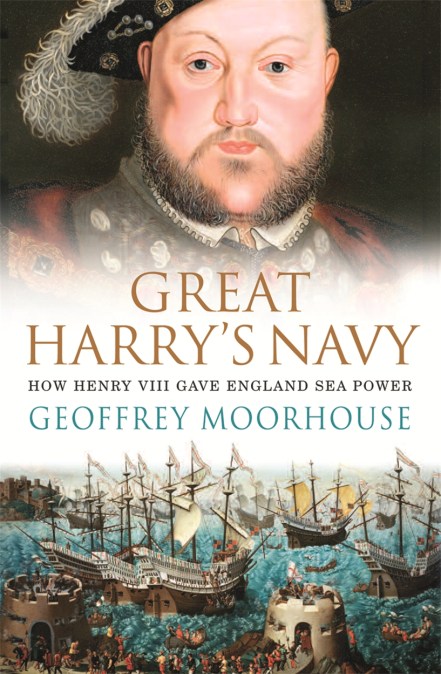Ground-breaking history of how King Henry VIII created England’s navy
It was Henry VIII who began the process of making England a first-rate sea-power. He inherited no more than seven warships from Henry VII, yet at his own death the King’s Navy had 53 seaworthy ships afloat (much the same size as the Royal Navy today) manned by almost 8,000 sailors.
Henry VIII originally needed a navy to hold the English Channel and blockade the enemy while he invaded France. Later when invasion from the continent grew serious Henry’s navy fought in many actions.
Moorhouse doesn’t only deal with seagoing exploits. Thanks to Henry VIII dockyards were built (Greenwich and Deptford), timber had to be felled in quantities previously unknown (from land seized during the dissolution of the monasteries), and hemp (for rope) was harvested; new skills were developed, not least the gun-founders and the master shipwrights.
Some of the ships were celebrated – ‘Henry Grace a Dieu’ (aka ‘Great Harry’) was the biggest ship in the world – 1,000 tons, 122 guns, crew of 700 and the ‘Mary Rose’ (500 tons, 80 guns, 40 crew) became one of the most famous after she heeled over too far, took water and sank with the loss of almost all hands off Portsmouth.
It was Henry VIII who began the process of making England a first-rate sea-power. He inherited no more than seven warships from Henry VII, yet at his own death the King’s Navy had 53 seaworthy ships afloat (much the same size as the Royal Navy today) manned by almost 8,000 sailors.
Henry VIII originally needed a navy to hold the English Channel and blockade the enemy while he invaded France. Later when invasion from the continent grew serious Henry’s navy fought in many actions.
Moorhouse doesn’t only deal with seagoing exploits. Thanks to Henry VIII dockyards were built (Greenwich and Deptford), timber had to be felled in quantities previously unknown (from land seized during the dissolution of the monasteries), and hemp (for rope) was harvested; new skills were developed, not least the gun-founders and the master shipwrights.
Some of the ships were celebrated – ‘Henry Grace a Dieu’ (aka ‘Great Harry’) was the biggest ship in the world – 1,000 tons, 122 guns, crew of 700 and the ‘Mary Rose’ (500 tons, 80 guns, 40 crew) became one of the most famous after she heeled over too far, took water and sank with the loss of almost all hands off Portsmouth.
Newsletter Signup
By clicking ‘Sign Up,’ I acknowledge that I have read and agree to Hachette Book Group’s Privacy Policy and Terms of Use





